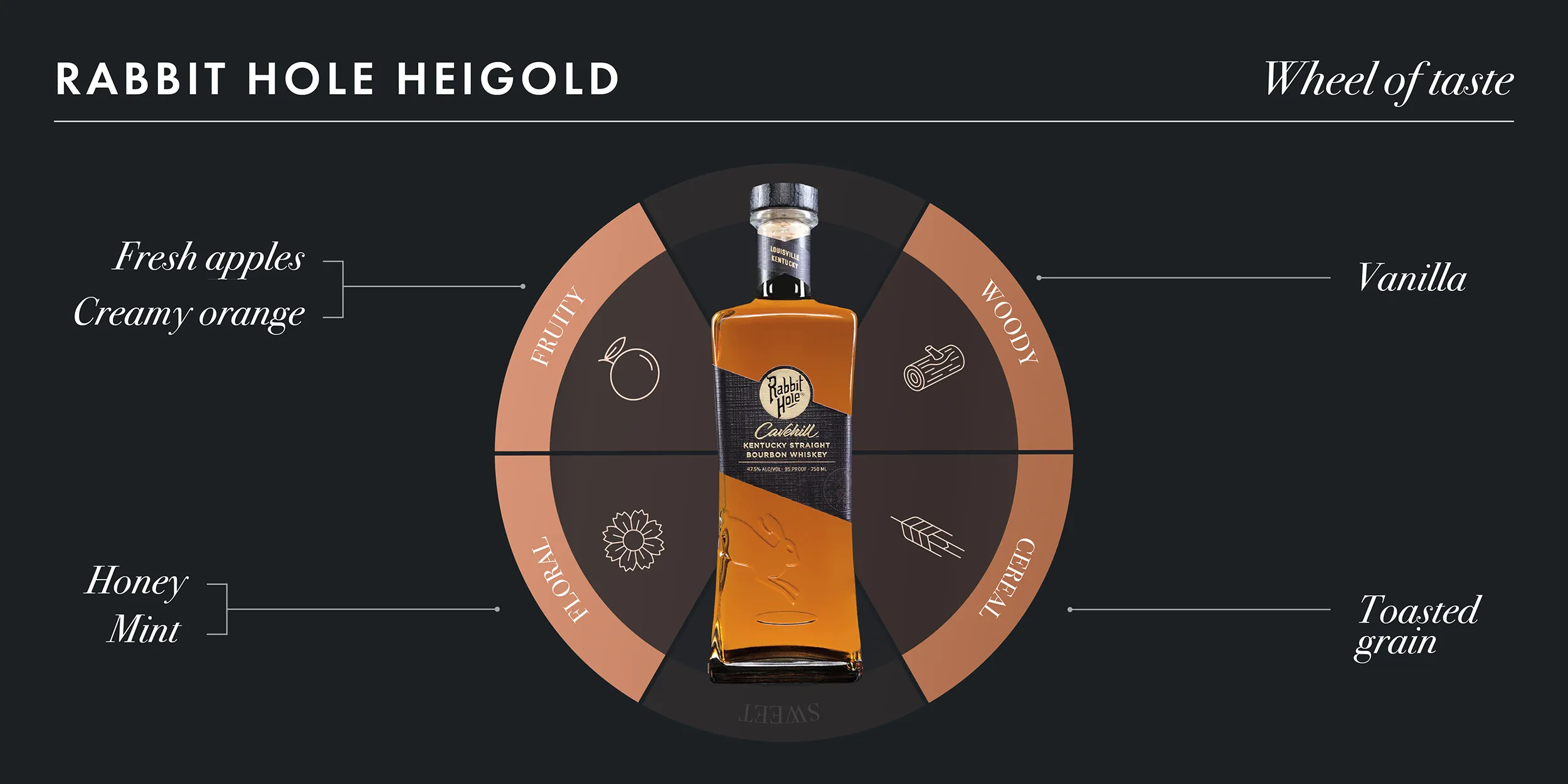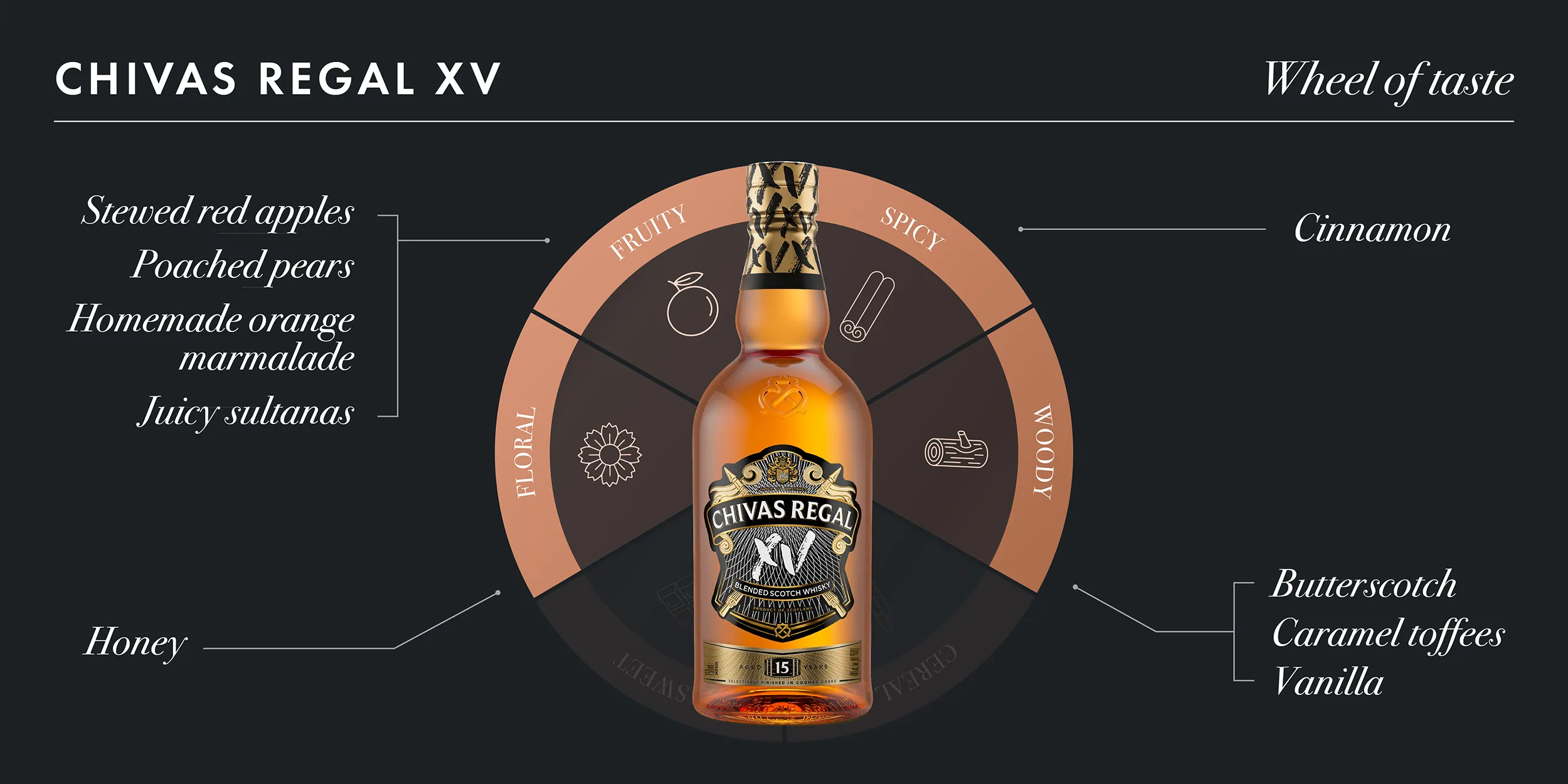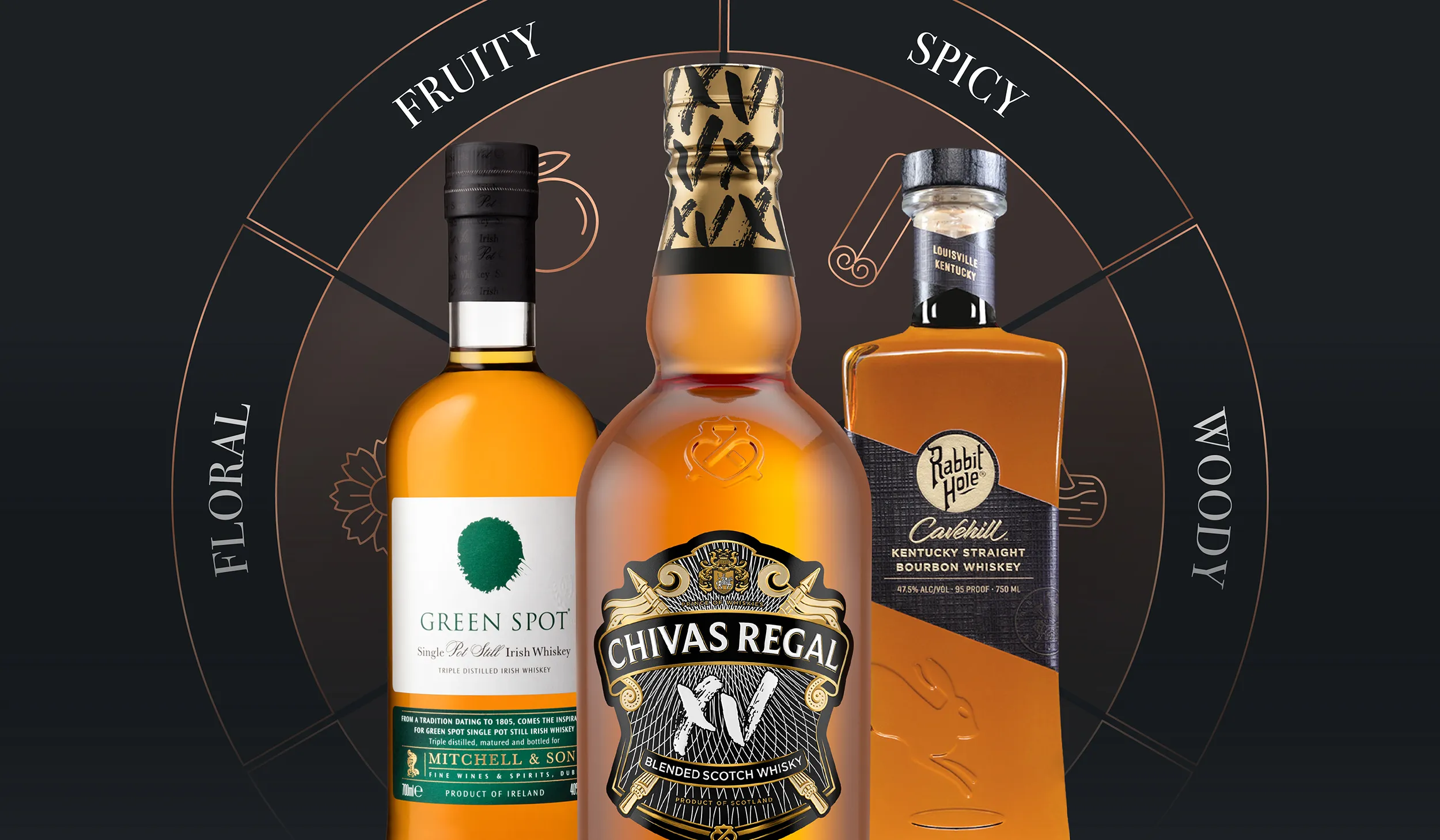How to ‘nose’ and taste whisky like a pro
Baked apple. Almond blossom. Antique shop. Dried orange peel. Cedar. Amontillado sherry.
As you get to know whisky better, the descriptions you come across in reviews and tasting notes can seem obscure, pretentious — made-up, even.
Yet you’ll also discover for yourself that these dazzling aromas and flavours are very real. Aromatic and flavour complexity is what makes whisky such an exciting beverage. As you’ll learn below, science can help us understand why.
But you don’t need a laboratory to delve into the aromatic and flavour complexity of whisky. The only apparatus you need are your nose, mouth and eyes.
If you want to “nose” whisky like a pro — and come up with your own vivid descriptions — follow The Drop Collective’s whisky tasting guide.
Step 1: How to set up a whisky tasting
Before you begin any whisky tasting, gather everything you need. That means:
- Glassware. People have lots of preferences for whisky glasses. But tulip-shaped ones — like the famous whisky tasting glass made by Glencairn — are ideal because they focus the aromas and direct them at your nose (which is your most essential piece of equipment);
- Mixers, ice and water. Especially the last of these — read why water is so important to nosing whisky in the section on “Preparing the whisky for nosing and tasting,” below;
- Snacks. Never drink alcohol on an empty stomach. For a whisky tasting, simple is best. Nuts, fruit, crackers, cookies, and chocolates are all fine partners for whisky.
- The whiskies, of course. If you’re trying multiple whiskies, how should you choose them? You could taste within a themed grouping — Irish whiskeys, for example. Or all over the map. (Whisky potluck nights can be fun — everyone comes to your house with a surprise bottle.)
Now you’re ready to sniff out what you’ve got.
Step 2: Taking a moment to look at the whisky
Notice carefully: What colour is the whisky? This can offer clues as to its maturation process. All whisky emerges clear from the still and takes on colour in the cask. Casks are fired — literally charred with fire — before whisky is added to them; this caramelizes the sugars in the wood, which colours the whisky and also adds caramelized sugar aromas and flavours.
Some casks colour the whisky more than others. Port casks and first-fill sherry casks can give a whisky a deep copper, verging on ruby-red colour. This is easy to see in Redbreast expressions like Tawny Port Edition and 27 Year Old. Bourbons tend to be a deep amber-brown because they must be aged in freshly charred casks. Those casks routinely go on to be reused by the Canadian, Irish or Scotch whisky industries — and once they’ve been filled a few times, they’ll lend the whisky a light golden straw colour.
Another way to use your eyes? If it’s not a blind tasting, read the label for the whisky (and the box, if there is one). There’s often interesting info there!
Step 3: Preparing the whisky for nosing and tasting (Answering the question: “Why do you add water to whisky?”)
The big question for debate at this stage is often: To water or not to water?
There are lots of ways to enjoy whisky — neat (that is, with nothing added), on ice (“on the rocks”), with a mixer or in a cocktail. They’re all acceptable. Your whisky belongs to you, and you’re free to enjoy it however you like.
For nosing and tasting, however, the best mixer for whisky is a few drops of bottled spring water — up to a small splash for stronger whiskies (i.e. cask strength). Why should you add water to your whisky? Because some of the chemical compounds that make whisky smell like whisky are chemically “locked” to the ethanol (alcohol) until a bit of extra water “frees” them to move around the liquid and into the air — and toward your nostrils.
In the next section we’ll explain a little more about the chemistry of whisky …
Step 4: How to nose whisky
This is the main event. Yes, smelling the whisky — “nosing,” to use the in-the-know parlance — is often more of a highlight than actually sipping, particularly for long-experienced whisky enjoyers.
Nosing is so important because what we often think of as our sense of taste is actually more our sense of smell. Taste is pretty basic, our sense of smell is what allows us to experience the dazzling kaleidoscope of aromas in whisky.
So take your time at this stage. Sniff gently, with your nose above (not stuck in) the glass. A connoisseur’s trick is to open your mouth while you sniff — you’ll look a bit silly (sorry) but you will detect more aromas.
There are other little tricks that will help you find the subtle hints in your whisky. Dab a drop into your hands, rub them together, and sniff. Let a couple drops of the whisky dry out in a glass for a few hours and sniff the residue. And compare notes with a friend (or with a published review) — sometimes all you need to detect an aroma is for someone to give you a hint about what to sniff around for.
Here are some of the common aromas found in whisky, grouped into sensory categories. Search for these first and then follow your nose from there…

The biggest question a lot of whisky novices have is whether this stuff is all made up. It definitely is not. It’s science. No, really.
The whisky distillation process creates minuscule amounts of chemical compounds known as “congeners.” These are chemicals that the human sense of smell locks on to and remembers, often associating them with a particular food or experience. For example, ethyl hexanoate (belonging to a group of chemicals called “esters”) is often present in whisky. But to your smell-memory it’s probably originally associated with red apple peels (and other fruits)

Barrel maturation also lends a lot of flavour to whisky. That vanilla aroma, for example? That’s vanillin, a phenolic aldehyde (for you chemistry majors out there) which is present in vanilla (obviously) but also in American white oak — which happens to be the most common wood used for aging whisky.
There are many versions of the flavour wheel in circulation. They contain categorizations that might not seem to make sense at first — for example, caramel belongs in the “woody” flavour category because charring casks caramelizes the sugars that naturally exist in wood, which is why whisky very often smells and tastes like caramel.
If this is all starting to sound too academic, don’t worry: You absolutely do not need to know the chemistry to enjoy whisky (most whisky lovers don’t know any of it). You just need to know that the flavours and aromas that take shape in your mind — vanilla or caramel or a hint of freshly cracked black pepper, and so on — are grounded in fact. Don’t fall victim to impostor syndrome: You really can smell compounds in whisky that are also found in foods, flowers, and other materials stored in your smell-memory.

You’ll notice in whisky tasting descriptions and reviews that certain descriptors are more common than others. A lot of whiskies smell and taste like caramel, vanilla, citrus fruit, baking spices like nutmeg and cinnamon, and (for bourbons especially) coconut. But as you read more reviews and try more whiskies, you’ll encounter more unusual aromas and descriptors for them — leather, marmalade, iodine, candle wax, sandalwood … we could go on and on. Even when delving into quite specific aromas, you may find lots of people detect the exact same thing. If you say “green apple” when nosing Green Spot, you definitely won’t be the first!
The nosing learning curve may feel overwhelming. Maybe it all just smells like “whisky” and you’re having trouble picking out more granular flavours. And that’s OK: Being able to articulate your sensory experience of whisky comes with time and practice. And even the most experienced whisky tasters will often admit they can’t smell everything — just like they don’t know everything

Step 5: Sipping — how to taste whisky
While your nose does most of the lifting, you’ll also notice additional sensations when you sip the whisky. Many tasting notes and reviews for whisky are in fact divided between nose and palate (or nose, palate and finish), depending on which stage the taster noticed the aroma at.
And in addition to aroma and taste (which, again, are really two sides of the same coin), there’s structure. Tasters talk about a whisky’s mouthfeel as being “robust,” “cloying,” “angular” and so on. The basic thing to know about a whisky’s body or structure is that there’s something of a spectrum from mellow (which you’re likely to find in Canadian and Irish blended whiskies) to rich (discover the “rich” sensation in Irish single pot stills and single malt Scotches) and bold (see what “bold” is about through bourbons, like Rabbit Hole, and Canadian whiskies with a high rye content, like Lot 40).
Finally, there’s the “finish,” which tells you how smoothly the whisky goes down, plus the aftertaste. It can be rich, it can be spicy, it can be sweet and, if the alcohol level is high, it can be “hot.” Thanks to the whisky’s long contact with the tannins in oak, it can be “tannic” — that refers to the tart, puckering sensation you may have experienced with oversteeped black tea.
And if you’re lucky, the finish is pleasantly long and lingering.
Step 6: Make sure you enjoy the whisky
Above all, remember that tasting whisky is supposed to be an enjoyable pastime or social occasion. You can take notes. You can discuss the whiskies with your friends. But remember not to take it too seriously. This is supposed to be fun.
On the lookout for interesting whiskies to try? (Of course you are, that’s why you’re here.) Find out about new and upcoming releases for Canada — make sure you don’t miss a drop.



